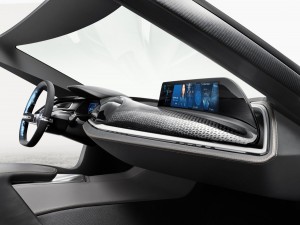Volvo: Our Driverless Car Will Be Out in 4 Years, and It Will Be Way More Advanced Than Anyone Else’s
Jennifer van der Kleut
Volvo is moving full-speed ahead toward debuting its own self-driving car, claiming it will be released in the next four years-and, quite confidently, stating it will be “way more advanced” than any other company’s vehicle.
Tech Insider reports, Volvo spokespersons say they are marketing their forthcoming driverless car as one in which people will be mere passengers, not drivers, who will be able to do other activities like read, work, eat or sleep rather than pay attention to what the car is doing.
“We are really trying to deploy the technology in reality. And when I say that, I mean self-driving cars that allow drivers to do something else behind the steering wheel,” Erik Coelingh, Senior Technical Leader for Safety and Driver Support Technologies, told Tech Insider.
One of the ways Volvo plans to accomplish this is through the DriveMe testing pilot, which they are touting as “the largest and most ambitious autonomous driving pilot yet.”
DriveMe will allow ordinary citizens to lease autonomous cars for public testing on pre-mapped streets and routes, and will collect data on the cars’ performance. With the valuable data gathered from the tests, Volvo says it will be able to perfect their autonomous drive systems in time for a 2020 mass debut.
The first few DriveMe locations will reportedly be London, China, and Volvo’s home nation of Sweden.
In tandem with Volvo’s claim that they will have autonomous cars out by 2020, the company has also famously promised that their cars will be completely “fatality-free” by then as well.
Volvo spokespersons say their cars will combine advanced safety features with autonomous drive technology to create the alleged casualty-proof cars.
Some experts say, Volvo is already close to achieving its goal of having no one die in one of its cars. According to Tech Insider, the company tracks how many people in Sweden die in its cars each year; and in the previous generation of its XC90, only one person died. Furthermore, according to the Institute for Highway Safety latest safety data, no one in the U.S. died in an XC90 between 2009 to 2012.
As it works toward its fully autonomous car, Volvo plans to release a partially autonomous car, reportedly similar to Tesla’s Autopilot, by 2017, Digital Trends reports.
Volvo CEO and President Håkan Samuelson told Digital Trends, “Autonomous driving represents a leap forward in car safety. The sooner [self-driving] cars are on the roads, the sooner lives will start being saved.”

 l as the noticeable lack of certain expected features:
l as the noticeable lack of certain expected features: